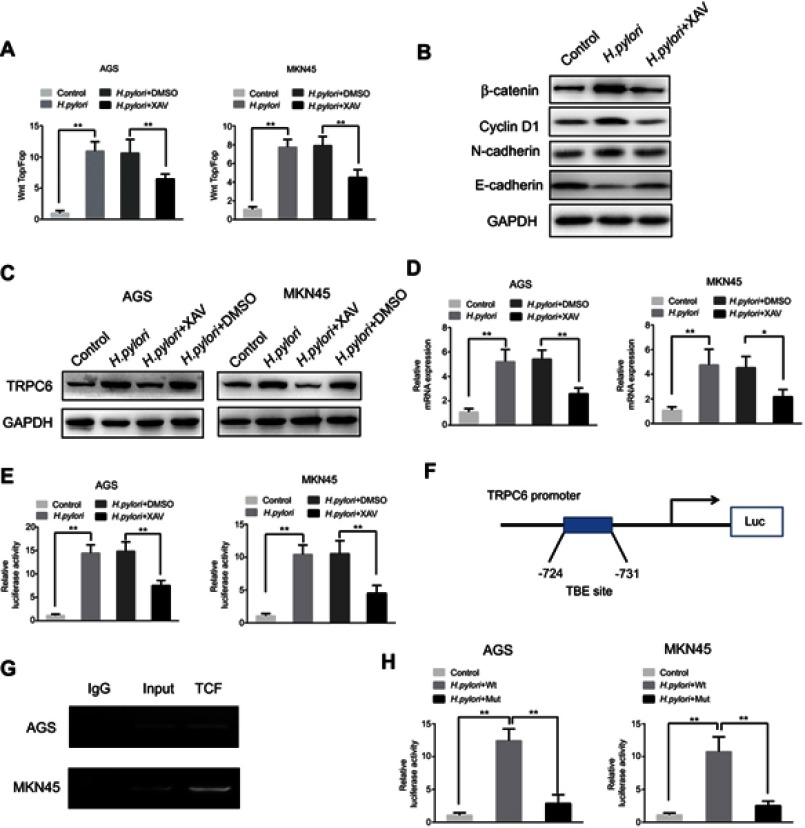Figure 4.
Wnt/β-catenin signaling is involved in H. pylori-induced transcriptional expression of TRPC6 in gastric cancer cells. (A) AGS and MKN45 cells were transfected with luciferase reporter constructs containing TCF/LEF-binding motifs (Top-Flash) or mutated TCF/LEF sites (Fop-Flash). Then, H. pylori was added to cells pretreated with XAV(10 μM) or DMSO for 2 hrs, luciferase activity was measured to assess β-catenin transcriptional activity. ** P<0.01. (B) Various markers of Wnt signaling were detected by Western blot in H. pylori treated cells with or without XAV. (C) AGS and MKN45 cells were pretreated with XAV or DMSO, and H. pylori was incubated with cells for 24 hrs. The TRPC6 protein expression was examined by Western blot analysis. (D) AGS and MKN45 cells were pretreated with XAV or DMSO, then H. pylori was incubated with cells for 24 hrs. The relative mRNA expression of TRPC6 was detected by qPCR analysis. ** P<0.01. (E) AGS and MKN45 cells were pre-transfected with luciferase reporter constructs containing the TRPC6 promoter for 4 hrs. Luciferase activity was measured to assess promoter activity in response to H. pylori infection in the absence or presence of XAV. ** P<0.01. (F) The potential TCF binding element (TBE) was identified within the TRPC6 promoter. (G) Chromatin immunoprecipitation (ChIP) assays were conducted in AGS and MKN45 cells using an antibody against TCF or a control IgG antibody. (H) The TBE binding site was mutated in the TRPC6 promoter, the mutated and wild type of TRPC6 promoter activity induced by H. pylori infection was assessed. ** P<0.01.

